- Home
- Neal Stephenson
Snow Crash Page 25
Snow Crash Read online
Page 25
“So the strict, book-based religion of the deuteronomists inoculated the Hebrews against the Asherah virus.”
“In combination with strict monogamy and other kosher practices, yes,” the Librarian says. “The previous religions, from Sumer up to Deuteronomy, are known as prerational. Judaism was the first of the rational religions. As such, in Lagos's view, it was much less susceptible to viral infection because it was based on fixed, written records. This was the reason for the veneration of the Torah and the exacting care used when making new copies of it—informational hygiene.”
“What are we living in nowadays? The postrational era?”
“Juanita made comments to that effect.”
“I'll bet she did. She's starting to make more sense to me, Juanita is.”
“Oh.”
“She never really made much sense before.”
“I see.”
“I think that if I can just spend enough time with you to figure out what's on Juanita's mind—well, wonderful things could happen.”
“I will try to be of assistance.”
“Back to work—this is no time for a hard-on. It seems that Asherah was a carrier of a viral infection. The deuteronomists somehow realized this and exterminated her by blocking all the vectors by which she infected new victims.”
“With reference to viral infections,” the Librarian says, “if I may make a fairly blunt, spontaneous cross-reference—something I am coded to do at opportune moments—you may wish to examine herpes simplex, a virus that takes up residence in the nervous system and never leaves. It is capable of carrying new genes into existing neurons and genetically reengineering them. Modern gene therapists use it for this purpose. Lagos thought that herpes simplex might be a modern, benign descendant of Asherah.”
“Not always benign,” Hiro says, remembering a friend of his who died of AIDS-related complications; in the last days, he had herpes lesions from his lips all the way down his throat. “It's only benign because we have immunities.”
“Yes, sir.”
“So did Lagos think that the Asherah virus actually altered the DNA of brain cells?”
“Yes. This was the backbone of his hypothesis that the virus was able to transmute itself from a biologically transmitted string of DNA into a set of behaviors.”
“What behaviors? What was Asherah worship like? Did they do sacrifices?”
“No. But there is evidence of cult prostitutes, both male and female.”
“Does that mean what I think it does? Religious figures who would hang around the temple and fuck people?”
“More or less.”
“Bingo. Great way to spread a virus. Now, I want to jump back to an earlier fork in the conversation.”
“As you wish. I can handle nested forkings to a virtually infinite depth.”
“You made a connection between Asherah and Eve.”
“Eve—whose Biblical name is Hawwa—is clearly the Hebrew interpretation of an older myth. Hawwa is an ophidian mother goddess.”
“Ophidian?”
“Associated with serpents. Asherah is also an ophidian mother goddess. And both are associated with trees as well.”
“Eve, as I recall, is considered responsible for getting Adam to eat the forbidden fruit, from the tree of knowledge of good and evil. Which is to say, it's not just fruit—it's data.”
“If you say so, sir.”
“I wonder if viruses have always been with us, or not. There's sort of an implicit assumption that they have been around forever. But maybe that's not true. Maybe there was a period of history when they were nonexistent or at least unusual. And at a certain point, when the metavirus showed up, the number of different viruses exploded, and people started getting sick a whole lot. That would explain the fact that all cultures seem to have a myth about Paradise, and the Fall from Paradise.”
“Perhaps.”
“You told me that the Essenes thought that tapeworms were demons. If they'd known what a virus was, they probably would have thought the same thing. And Lagos told me the other night that, according to the Sumerians, there was no concept of good and evil per se.”
“Correct. According to Kramer and Maier, there are good demons and bad demons.‘Good ones bring physical and emotional health. Evil ones bring disorientation and a variety of physical and emotional ills. . . . But these demons can hardly be distinguished from the diseases they personify . . . and many of the diseases sound, to modern ears, as though they must be psychosomatic.' ”
“That's what the doctors said about Da5id, that his disease must be psychosomatic.”
“I don't know anything about Da5id, except for some rather banal statistics.”
“It's as though ‘good' and ‘evil' were invented by the writer of the Adam and Eve legend to explain why people get sick—why they have physical and mental viruses. So when Eve—or Asherah—got Adam to eat the fruit of the tree of knowledge of good and evil, she was introducing the concept of good and evil into the world—introducing the metavirus, which creates viruses.”
“Could be.”
“So my next question is: Who wrote the Adam and Eve legend?”
“This is a source of much scholarly argument.”
“What did Lagos think? More to the point, what did Juanita think?”
“Nicolas Wyatt's radical interpretation of the Adam and Eve story supposes that it was, in fact, written as a political allegory by the deuteronomists.”
“I thought they wrote the later books, not Genesis.”
“True. But they were involved in compiling and editing the earlier books as well. For many years, it was assumed that Genesis was written sometime around 900 B.C. or even earlier—long before the advent of the deuteronomists. But more recent analysis of the vocabulary and content suggests that a great deal of editorial work—possibly even authorial work—took place around the time of the Exile, when the deuteronomists held sway.”
“So they may have rewritten an earlier Adam and Eve myth.”
“They appear to have had ample opportunity. According to the interpretation of Hvidberg and, later, Wyatt, Adam in his garden is a parable for the king in his sanctuary, specifically King Hosea, who ruled the northern kingdom until it was conquered by Sargon II in 722 B.C.”
“That's the conquest you mentioned earlier—the one that drove the deuteronomists southward toward Jerusalem.”
“Exactly. Now ‘Eden,' which can be understood simply as the Hebrew word for ‘delight,' stands for the happy state in which the king existed prior to the conquest. The expulsion from Eden to the bitter lands to the east is a parable for the massive deportation of Israelites to Assyria following Sargon II's victory. According to this interpretation, the king was enticed away from the path of righteousness by the cult of El, with its associated worship of Asherah—who is commonly associated with serpents, and whose symbol is a tree.”
“And his association with Asherah somehow caused him to be conquered—so when the deuteronomists reached Jerusalem, they recast the Adam and Eve story as a warning to the leaders of the southern kingdom.”
“Yes.”
“And perhaps, because no one was listening to them, perhaps they invented the concept of good and evil in the process, as a hook.”
“Hook?”
“Industry term. Then what happened? Did Sargon II try to conquer the southern kingdom also?”
“His successor, Sennacherib, did. King Hezekiah, who ruled the southern kingdom, prepared for the attack feverishly, making great improvements in the fortifications of Jerusalem, improving its supply of drinking water. He was also responsible for a far-reaching series of religious reforms, which he undertook under the direction of the deuteronomists.”
“How did it work out?”
“The forces of Sennacherib surrounded Jerusalem. ‘And that night the angel of the LORD went forth, and slew a hundred and eighty-five thousand in the camp of the Assyrians; and when men arose early in the morning, behold, these were all d
ead bodies. Then Sennacherib king of Assyria departed . . .' 2 Kings 19:35–36.”
“I'll bet he did. So let me get this straight: the deuteronomists, through Hezekiah, impose a policy of informational hygiene on Jerusalem and do some civil-engineering work—you said they worked on the water supply?”
“‘They stopped all the springs and the brook that flowed through the land, saying, “Why should the kings of Assyria come and find much water?” ' 2 Chronicles 32: 4. Then the Hebrews carved a tunnel seventeen hundred feet through solid rock to carry that water inside city walls.”
“And then as soon as Sennacherib's soldiers came on the scene, they all dropped dead of what can only be understood as an extremely virulent disease, to which the people of Jerusalem were apparently immune. Hmm, interesting—I wonder what got into their water?”
31
Y.T. doesn't get down to Long Beach very much, but when she does, she will do just about anything to avoid the Sacrifice Zone. It's an abandoned shipyard the size of a small town. It sticks out into San Pedro Bay, where the older, nastier Burbclaves of the Basin—unplanned Burbclaves of tiny asbestos-shingled houses patrolled by beetle-browed Kampuchean men with pump shotguns—fade off into the foam-kissed beaches. Most of it's on the appropriately named Terminal Island, and since her plank doesn't run on the water, that means she can only get in or out by one access road.
Like all Sacrifice Zones, this one has a fence around it, with yellow metal signs wired to it every few yards.
SACRIFICE ZONE
WARNING. The National Parks Service has declared this area to be a National Sacrifice Zone. The Sacrifice Zone Program was developed to manage parcels of land whose clean-up cost exceeds their total future economic value.
And like all Sacrifice Zone fences, this one has holes in it and is partially torn down in places. Young men blasted out of their minds on natural and artificial male hormones must have some place to do their idiotic coming-of-age rituals. They come in from Burbclaves all over the area in their four-wheel-drive trucks and tear across the open ground, slicing long curling gashes into the clay cap that was placed on the really bad parts to prevent windblown asbestos from blizzarding down over Disneyland.
Y.T. is oddly satisfied to know that these boys have never even dreamed of an all-terrain vehicle like Ng's motorized wheelchair. It veers off the paved road with no loss in speed—ride gets a little bumpy—and hits the chain-link fence as if it were a fog bank, plowing a hundred-foot section into the ground.
It is a clear night, and so the Sacrifice Zone glitters, an immense carpet of broken glass and shredded asbestos. A hundred feet away, some seagulls are tearing at the belly of a dead German shepherd lying on its back. There is a constant undulation of the ground that makes the shattered glass flash and twinkle; this is caused by vast, sparse migrations of rats. The deep, computer-designed imprints of suburban boys' fat knobby tires paint giant runes on the clay, like the mystery figures in Peru that Y.T.'s mom learned about at the NeoAquarian Temple. Through the windows, Y.T. can hear occasional bursts of either firecrackers or gunfire.
She can also hear Ng making new, even stranger sounds with his mouth.
There is a built-in speaker system in this van—a stereo, though far be it from Ng to actually listen to any tunes. Y.T. can feel it turning on, can sense a nearly inaudible hiss coming from the speakers.
The van begins to creep forward across the Zone.
The inaudible hiss gathers itself up into a low electronic hum. It's not steady, it wavers up and down, staying pretty low, like Roadkill fooling around with his electric bass. Ng keeps changing the direction of the van, as though he's searching for something, and Y.T. gets the sense that the pitch of the hum is rising.
It's definitely rising, building up in the direction of a squeal. Ng snarls a command and the volume is reduced. He's driving very slowly now.
“It is possible that you might not have to buy any Snow Crash at all,” he mumbles. “We may have found an unprotected stash.”
“What is this totally irritating noise?”
“Bioelectronic sensor. Human cell membranes. Grown in vitro, which means in glass—in a test tube. One side is exposed to outside air, the other side is clean. When a foreign substance penetrates the cell membrane to the clean side, it's detected. The more foreign molecules penetrate, the higher the pitch of the sound.”
“Like a Geiger counter?”
“Very much like a Geiger counter for cell-penetrating compounds,” Ng says.
Like what? Y.T. wants to ask. But she doesn't.
Ng stops the van. He turns on some lights—very dim lights. That's how anal this guy is—he has gone to the trouble to install special dim lights in addition to all the bright ones.
They are looking into a sort of bowl, right at the foot of a major drum heap, that is strewn with litter. Most of the litter is empty beer cans. In the middle is a fire pit. Many tire tracks converge here.
“Ah, this is good,” Ng says. “A place where the young men gather to take drugs.”
Y.T. rolls her eyes at this display of tubularity. This must be the guy who writes all those antidrug pamphlets they get at school.
Like he's not getting a million gallons of drugs every second through all of those gross tubes.
“I don't see any signs of booby traps,” Ng says. “Why don't you go out and see what kind of drug paraphernalia is out there.”
She looks at him like, what did you say?
“There's a toxics mask hanging on the back of your seat,” he says.
“What's out there, toxic-wise?”
“Discarded asbestos from the shipbuilding industry. Marine antifouling paints that are full of heavy metals. They used PCBs for a lot of things, too.”
“Great.”
“I sense your reluctance. But if we can get a sample of Snow Crash from this drug-taking site, it will obviate the rest of our mission.”
“Well, since you put it that way,” Y.T. says, and grabs the mask. It's a big rubber-and-canvas number that covers her whole head and neck. Feels heavy and awkward at first, but whoever designed it had the right idea, all the weight rests in the right places. There's also a pair of heavy gloves that she hauls on. They are way too big. Like the people at the glove factory never dreamed that an actual female could wear gloves.
She trudges out onto the glass-and-asbestos soil of the Zone, hoping that Ng isn't going to slam the door shut and drive away and leave her there.
Actually, she wishes he would. It would be a cool adventure.
Anyway, she goes up to the middle of the “drug-taking site.” Is not too surprised to see a little nest of discarded hypodermic needles. And some tiny little empty vials. She picks up a couple of the vials, reads their labels.
“What did you find?” Ng says when she gets back into the van, peels off the mask.
“Needles. Mostly Hyponarxes. But there's also a couple of Ultra Laminars and some Mosquito twenty-fives.”
“What does all this mean?”
“Hyponarx you can get at any Buy 'n' Fly, people call them rusty nails, they are cheap and dull. Supposedly the needles of poor black diabetics and junkies. Ultra Laminars and Mosquitos are hip, you get them around fancy Burbclaves, they don't hurt as much when you stick them in, and they have better design. You know, ergonomic plungers, hip color schemes.”
“What drug were they injecting?”
“Checkitout,” Y.T. says, and holds up one of the vials toward Ng.
Then it occurs to her that he can't exactly turn his head to look.
“Where do I hold it so you can see it?” she says.
Ng sings a little song. A robot arm unfolds itself from the ceiling of the van, crisply yanks the vial from her hand, swings it around, and holds it in front of a video camera set into the dashboard.
The typewritten label stuck onto the vial says, just “Testosterone.”
“Ha ha, a false alarm,” Ng says. The van suddenly rips forward, starts heading right into t
he middle of the Sacrifice Zone.
“Want to tell me what's going on?” Y.T. says, “since I have to actually do the work in this outfit?”
“Cell walls,” Ng says. “The detector finds any chemical that penetrates cell walls. So we homed in naturally on a source of testosterone. A red herring. How amusing. You see, our biochemists lead sheltered lives, did not anticipate that some people would be so mentally warped as to use hormones like they were some kind of drug. How bizarre.”
Y.T. smiles to herself. She really likes the idea of living in a world where someone like Ng can get off calling someone else bizarre. “What are you looking for?”
“Snow Crash,” Ng says. “Instead, we found the Ring of Seventeen.”
“Snow Crash is the drug that comes in the little tubes,” Y.T. says. “I know that. What's the Ring of Seventeen? One of those crazy new rock groups that kids listen to nowadays?”
“Snow Crash penetrates the walls of brain cells and goes to the nucleus where the DNA is stored. So for purposes of this mission, we developed a detector that would enable us to find cell wall-penetrating compounds in the air. But we didn't count on heaps of empty testosterone vials being scattered all over the place. All steroids—artificial hormones—share the same basic structure, a ring of seventeen atoms that acts like a magic key that allows them to pass through cell walls. That's why steroids are such powerful substances when they are unleashed in the human body. They can go deep inside the cell, into the nucleus, and actually change the way the cell functions.
“To summarize: the detector is useless. A stealthy approach will not work. So we go back to the original plan. You buy some Snow Crash and throw it up in the air.”
Y.T. doesn't quite understand that last part yet. But she shuts up for a while, because in her opinion, Ng needs to pay more attention to his driving.
Once they get out of that really creepy part, most of the Sacrifice Zone turns out to consist of a wilderness of dry brown weeds and large abandoned hunks of metal. There are big heaps of shit rising up from place to place—coal or slag or coke or smelt or something.

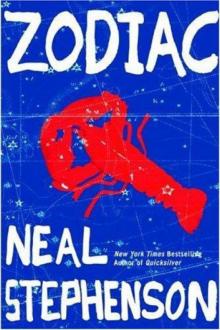 Zodiac: The Eco-Thriller
Zodiac: The Eco-Thriller The Mongoliad: Book One
The Mongoliad: Book One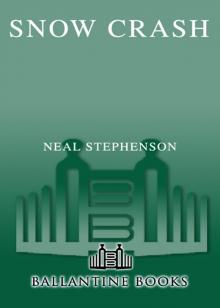 Snow Crash
Snow Crash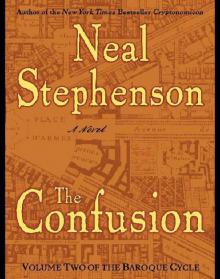 The Confusion: Volume Two of the Baroque Cycle
The Confusion: Volume Two of the Baroque Cycle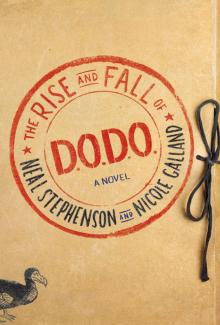 The Rise and Fall of D.O.D.O.
The Rise and Fall of D.O.D.O. The Diamond Age: Or, a Young Lady's Illustrated Primer
The Diamond Age: Or, a Young Lady's Illustrated Primer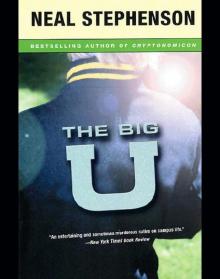 The Big U
The Big U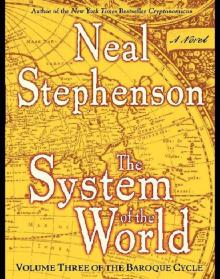 The System of the World: Volume Three of the Baroque Cycle
The System of the World: Volume Three of the Baroque Cycle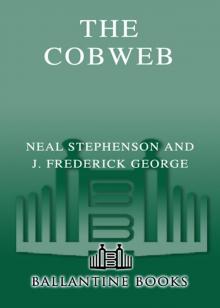 The Cobweb
The Cobweb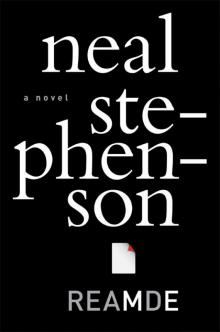 Reamde
Reamde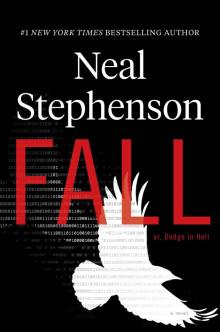 Fall; or, Dodge in Hell
Fall; or, Dodge in Hell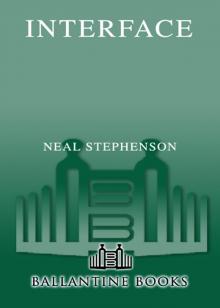 Interface
Interface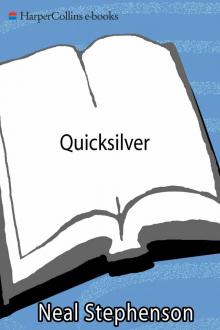 Quicksilver
Quicksilver The Mongoliad: Book Three
The Mongoliad: Book Three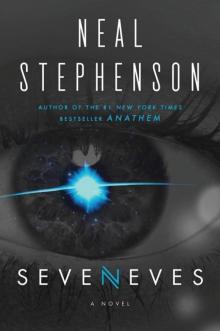 Seveneves
Seveneves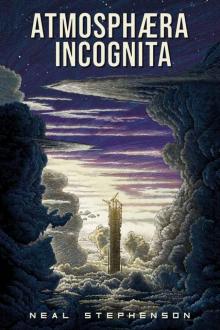 Atmosphæra Incognita
Atmosphæra Incognita In the Beginning...Was the Command Line
In the Beginning...Was the Command Line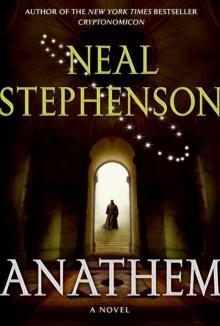 Anathem
Anathem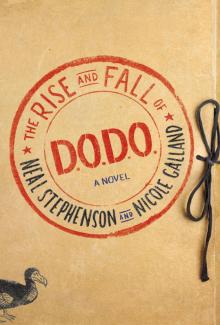 The Rise and Fall of D.O.D.O.: A Novel
The Rise and Fall of D.O.D.O.: A Novel The Mongoliad: Book Two
The Mongoliad: Book Two Diamond Age or a Young Lady's Illustrated Primer
Diamond Age or a Young Lady's Illustrated Primer THE System OF THE WORLD
THE System OF THE WORLD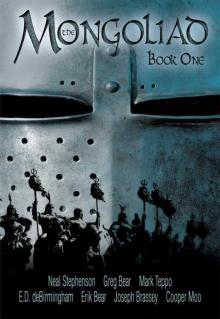 The Mongoliad: Book One tfs-1
The Mongoliad: Book One tfs-1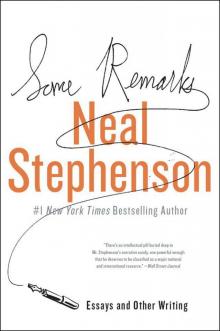 Some Remarks: Essays and Other Writing
Some Remarks: Essays and Other Writing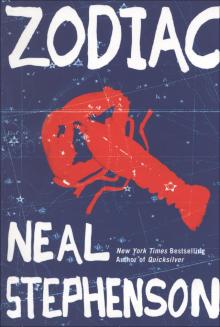 Zodiac
Zodiac Spew
Spew The Baroque Cycle: Quicksilver, the Confusion, and the System of the World
The Baroque Cycle: Quicksilver, the Confusion, and the System of the World The Diamond Age
The Diamond Age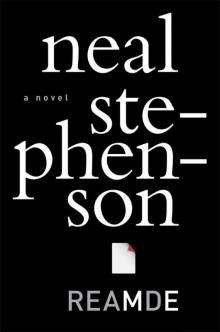 Reamde: A Novel
Reamde: A Novel In the Kingdom of Mao Bell
In the Kingdom of Mao Bell Mother Earth Mother Board
Mother Earth Mother Board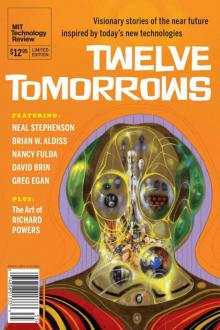 Twelve Tomorrows - Visionary stories of the near future inspired by today's technologies
Twelve Tomorrows - Visionary stories of the near future inspired by today's technologies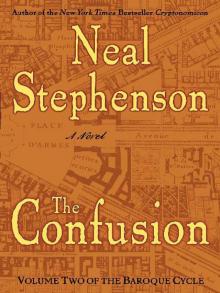 The Confusion
The Confusion The Great Simoleon Caper
The Great Simoleon Caper The Mongoliad: Book Three tfs-3
The Mongoliad: Book Three tfs-3